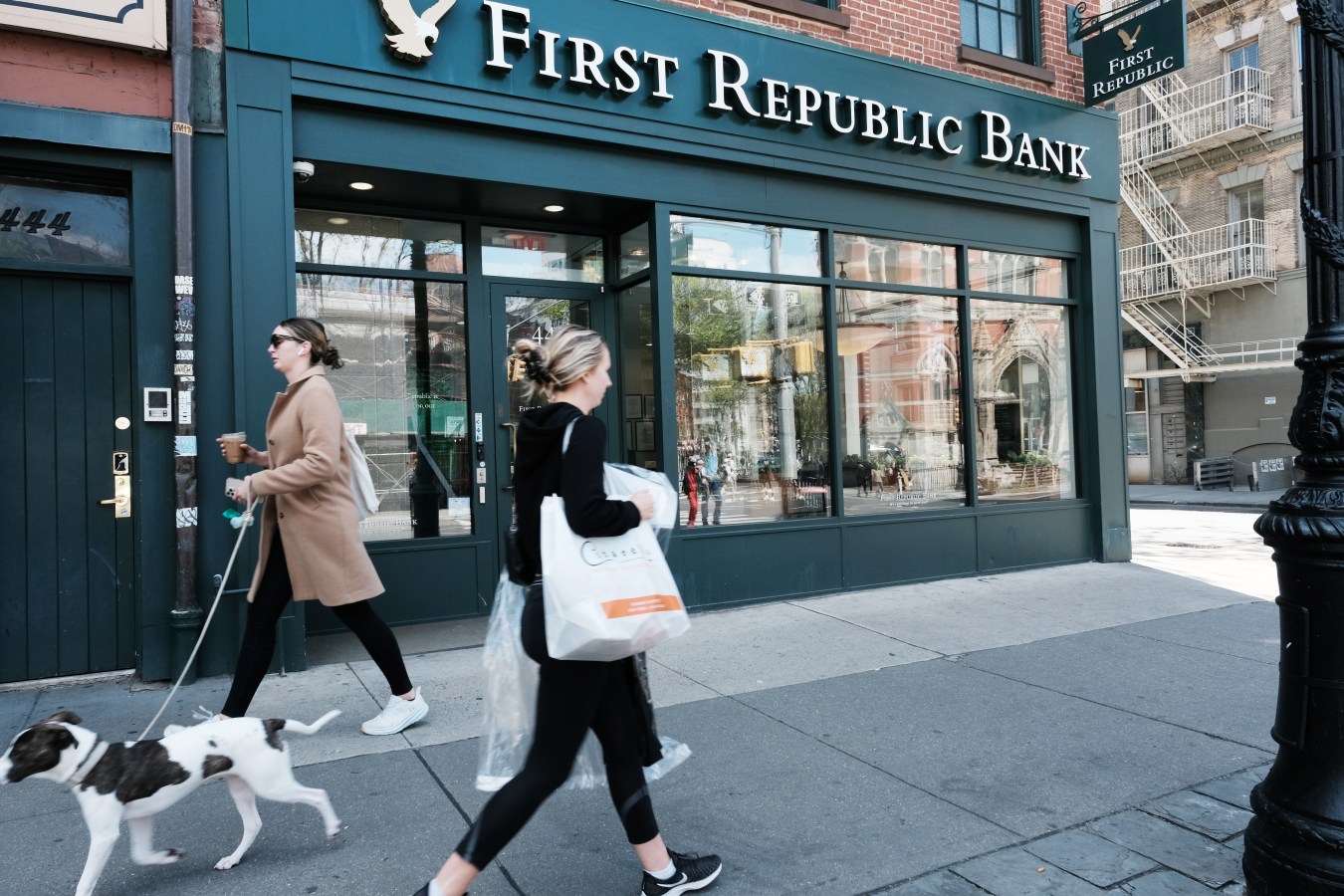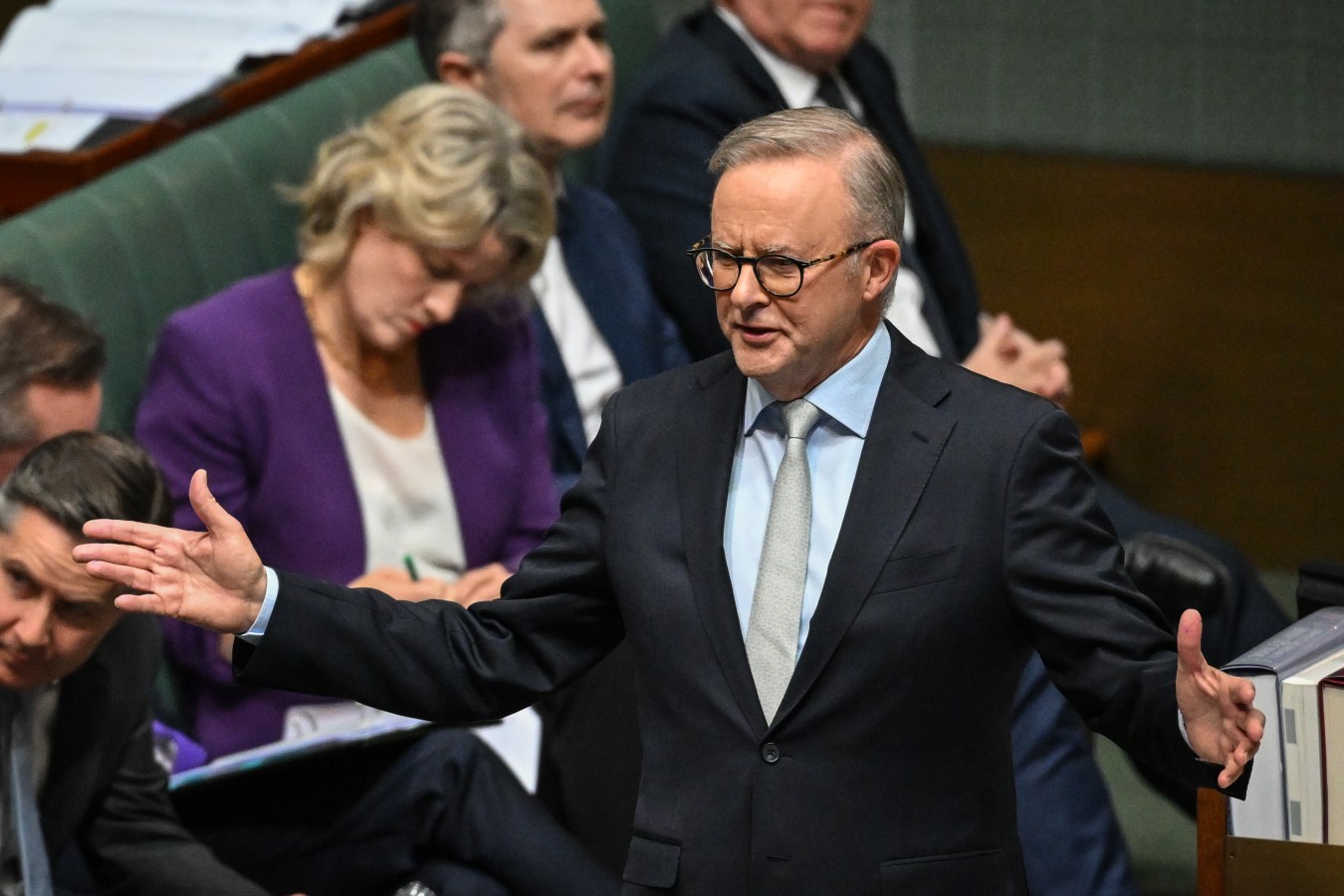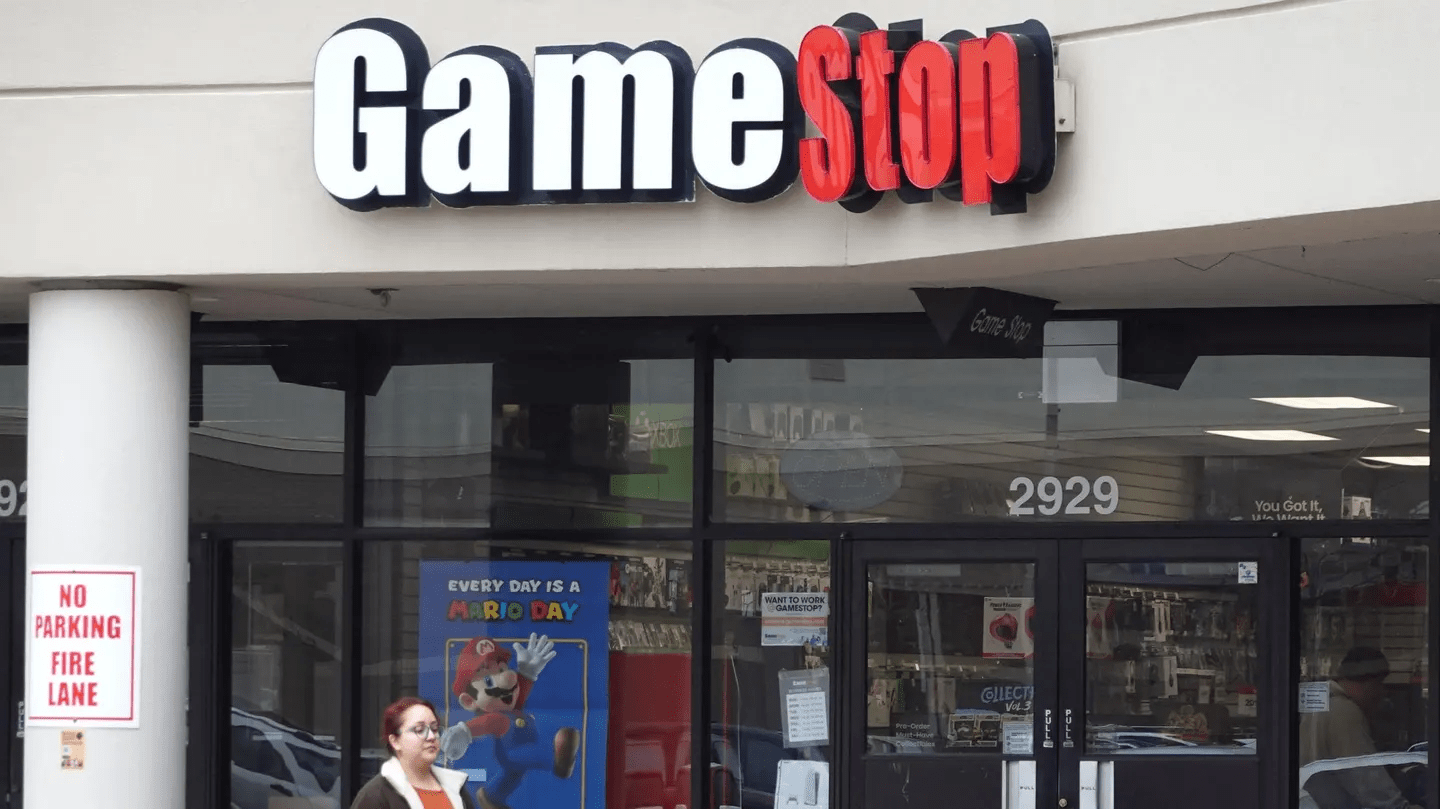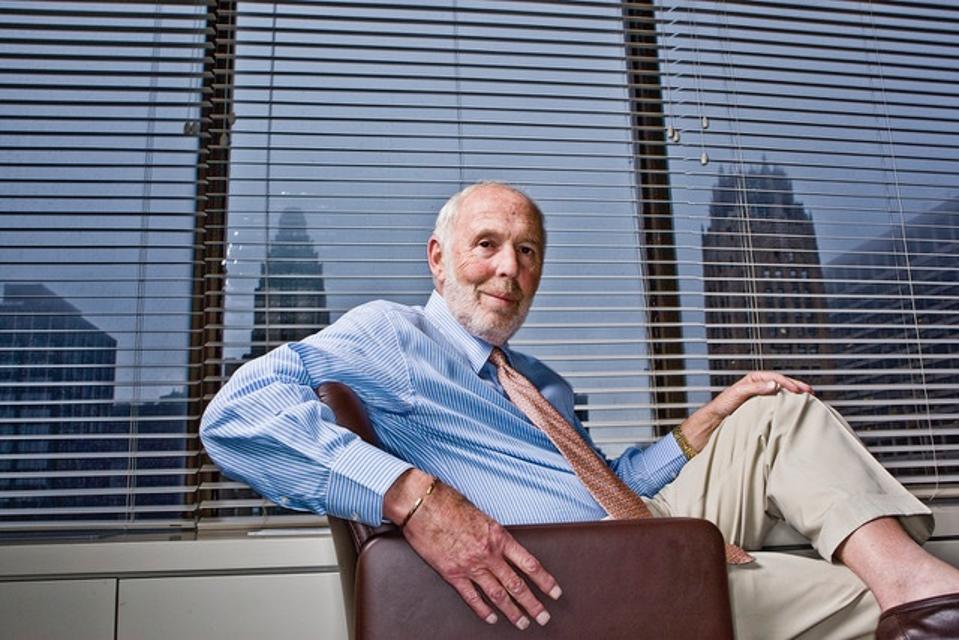The U.S.’ largest bank grew even bigger Monday after JPMorgan Chase acquired most holdings of the failed regional bank First Republic, sending JPMorgan’s stock soaring—though the company’s billionaire CEO claimed just last month the bank would not benefit from the turmoil among its smaller peers.

JPMorgan Chase CEO Jamie Dimon smiles during a 2022 Senate hearing.
Shares of JPMorgan rose about 4% in early Monday trading, on pace for its second-largest daily jump since October 2022.
Already the largest American bank by total assets and deposits, JPMorgan will assume a majority of First Republic’s $229 billion in assets and $104 billion in deposits, the Federal Deposit Insurance Corporation announced, and First Republic’s 84 branches will reopen Monday as JPMorgan branches.
First Republic joins Silicon Valley Bank and Signature Bank in failure, while JPMorgan joins the institution’s respective buyers New York Community Bank and First Citizens Bank in enjoying massive stock gains following their acquisitions of most of the holdings from their failed counterparts; shares of New York Community Bank and First Citizens are up more than 60% since announcing their deals in March.
Despite JPMorgan’s roughly $15 billion surge in market capitalization, other large bank stocks were little changed and major stock indexes were flat, though First Republic’s stock sank another 34%, with its market value down over the last two months from $23 billion to less than $500 million.
Related
Contra
JPMorgan investors’ first reaction to the First Republic news was evidently positive, and JPMorgan CEO Jamie Dimon said the deal “modestly benefits” his company in a statement accompanying the company’s press release announcing the acquisition. But in an April letter to investors, Dimon asserted the “notion that this meltdown was good for [larger banks] in any way is absurd.”
Surprising Fact
Shares of JPMorgan are now trading at a higher price than they did March 6, the last trading session before the banking crisis escalated, wiping out what was once a nearly 15% loss. JPMorgan’s largest competitors have yet to fully recover from their March stock losses, as shares of Bank of America, Wells Fargo and Morgan Stanley are each down 10% or more over the last eight weeks.
Key Background
California-based Silicon Valley Bank failed March 10, while New York-based Signature Bank failed two days later, two of the three largest American bank failures ever. Federal regulators subsequently stepped in to guarantee all depositors at the two institutions. Shares of the 10 largest American banks shed some $240 billion in market value in March as anxiety over the industry’s outlook as a whole prevailed. JPMorgan led a coalition of 11 large banks who made a total of $30 billion in uninsured deposits at First Republic in a doomed attempt to lift up the lender in March.
Crucial Quote
“Banks will consolidate,” Dimon said on a Monday morning conference call, though he added the current crisis at regional banks is “mostly over.”
This story was first published on forbes.com and all figures are in USD.
Forbes Australia issue no.4 is out now. Tap here to secure your copy or become a member here.
Look back on the week that was with hand-picked articles from Australia and around the world. Sign up to the Forbes Australia newsletter here.



